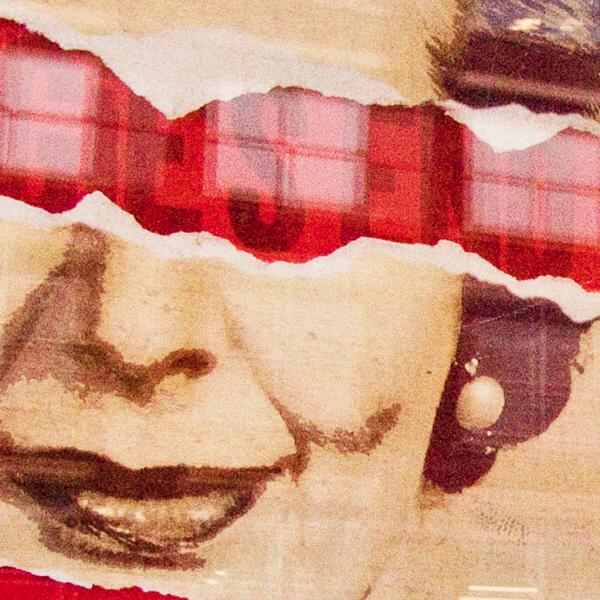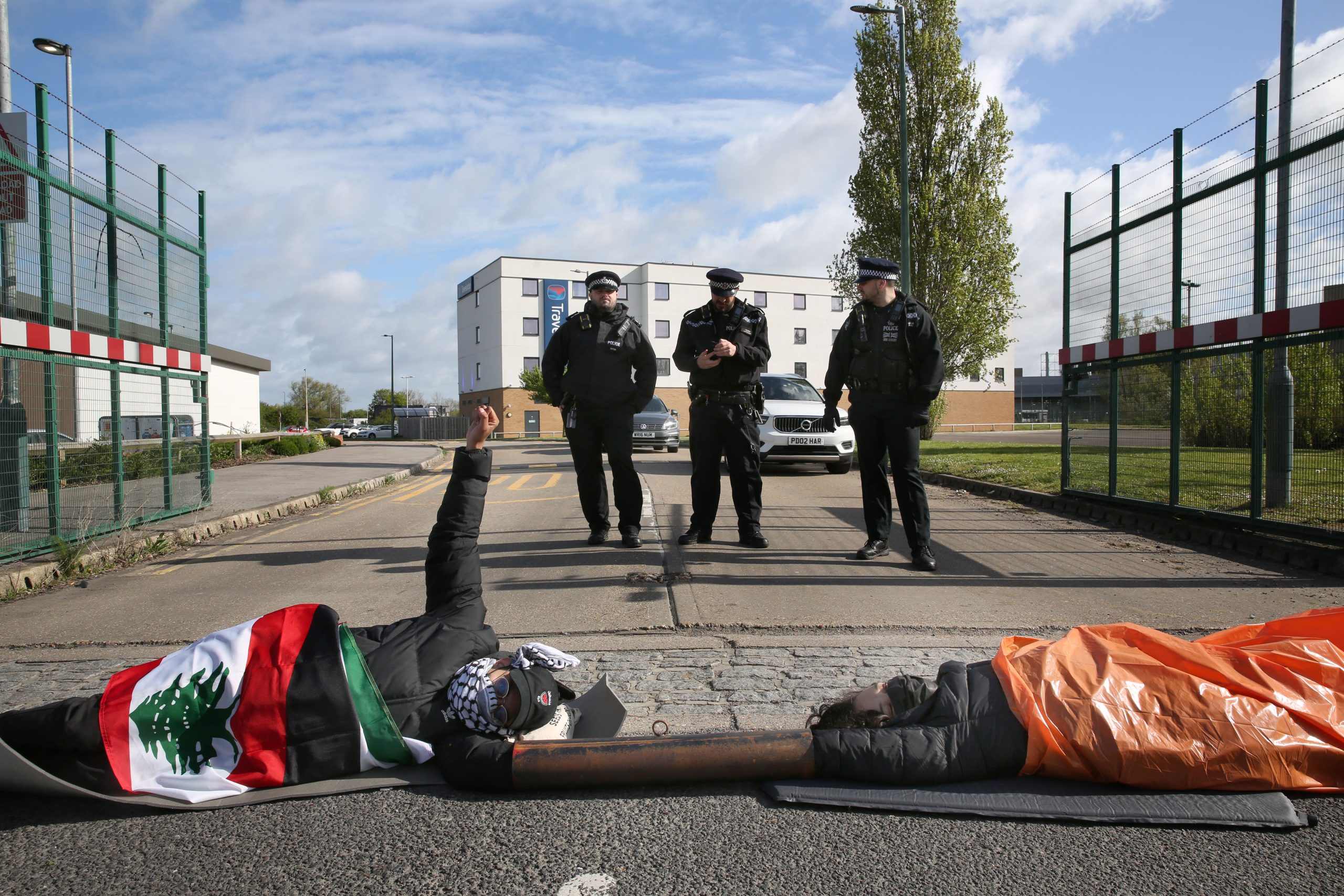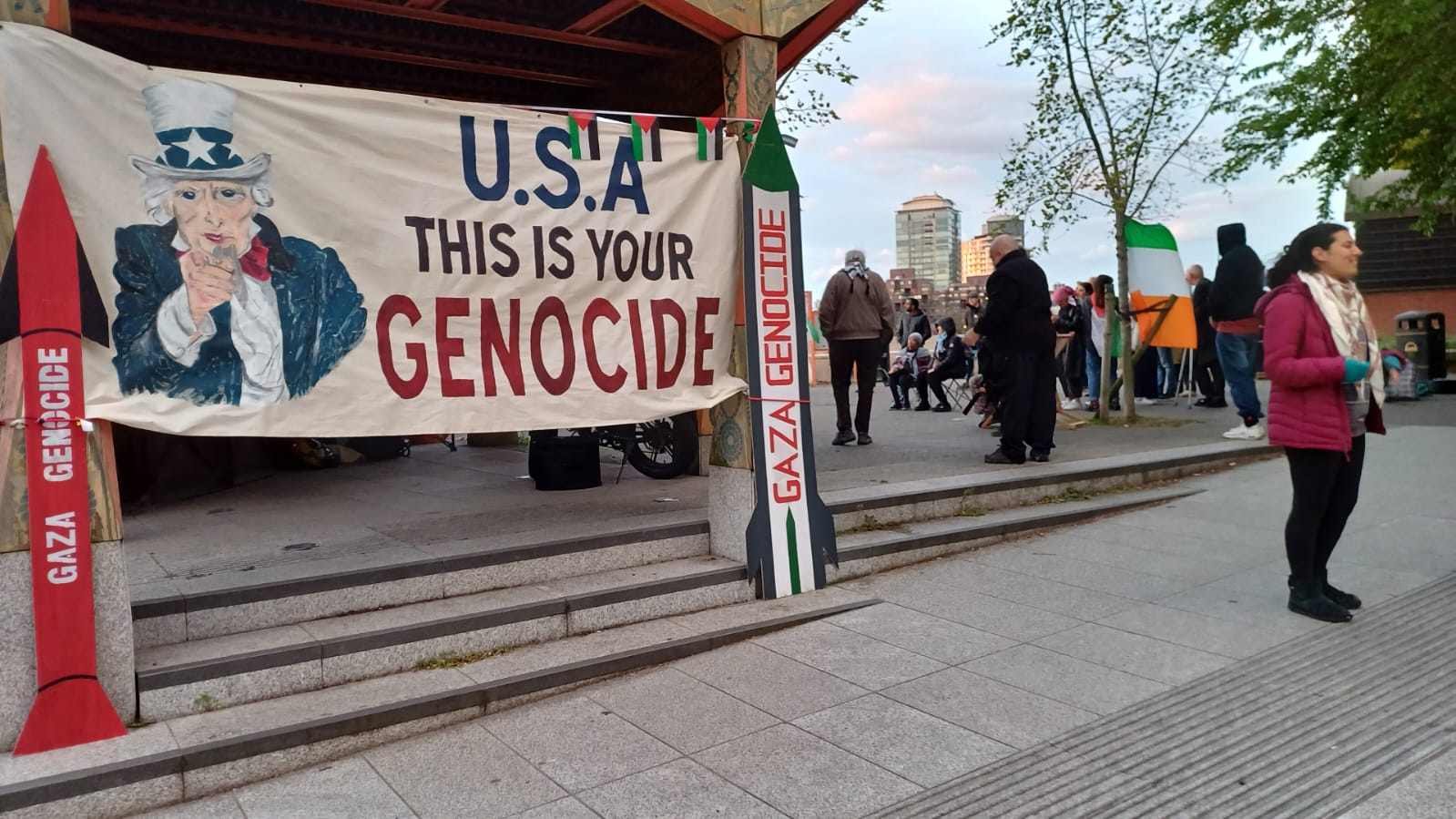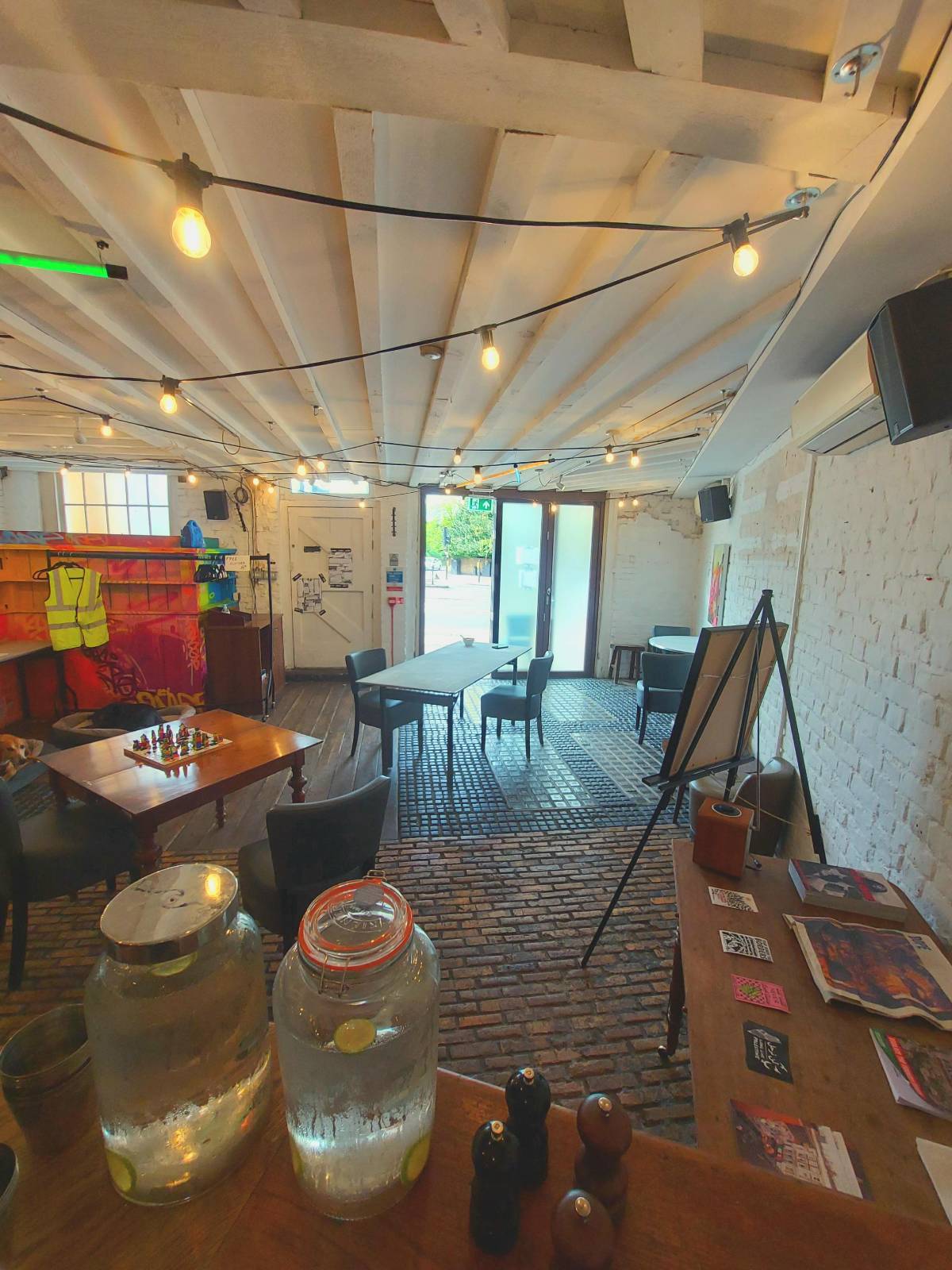In November, flash floods caused by heavy overnight rain have killed at least 23 people and caused significant destruction in central Greece. The floods hit one of the poorest of the areas surrounding Athens, and by many were compared to the tragedy of Grenfell Tower. This is a personal account and comment from Fani Tsioumpekou, a Greek comrade who was personally affected by this disaster.
It was around 9 am in the morning of the 15th of November when I was woken up by the banging on the door and a woman’s voice screaming “Open up! Open up! Quick! We are flooding!”. I could hear my two dogs barking, scared, in my backyard. The banging on the door continued, as well as the woman screaming, and I could now recognise the voice of our landlady. I got up, went outside and saw our backyard covered in thick red mud and objects I couldn’t make out what they were. I was petrified. This thick debris looked like it is knee high. Thankfully, the dogs were safe at the porch. The mud was only inches underneath them, but still, they were safe. Ok, we are all safe. Nothing to worry about. I ran to the door.
My landlady was terrified. She was shivering under her raincoat. I noticed that her feet were covered in stains of mud. Since she lives only 3 blocks away, I figured that all the streets in the area must be covered with mud “We have to go and check if the basement is flooded and I didn’t have the keys!” Oh yes, the basement at the back yard should also be full of mud, I thought, and maybe this was the reason the mud didn’t reach our house. I wanted to call the fire brigade to pump all this mud out, but she told me that all houses in the area are like this and they have too much work to do. She also said their first priority is to go and rescue people trapped in their houses in Mandra, about 10km away from my house.

When she left, I tried to open my computer to go online to see what was going on. No such luck, the internet was down. Me and my mate spent the biggest part of the morning trying to call neighbours, friends and relatives who live in the area to check if they were safe. The phone signal went on and off, and the communication was poor. After two or three hours the electricity power was off too, so we stayed in a cold house, with no way to communicate with the world outside, feeling scared and desperate as we were watching out of the front window the torrents of mud water passing by just outside of our house, taking away everything in their way. I realised that the biggest fear of all is the anxiety you feel when you don’t know what the best thing to do is: to run away from home in order to protect your family and yourself in case this mud becomes higher and gets in your house, or to try to stay calm inside and hope that this doesn’t happen?
Some hours later the power, mobile network and the internet came back. Everyone we knew was safe. One of our friends who lives up in the mountain with his two dogs, described the fear he felt when he saw an entire part of the mountain detaching and sliding down like waterfall towards his house. He ran in panic inside the house, but forgot to take his dogs with him. The torrent tore down the stone fence by his house, took his car and a huge, 2.5 tonnes, refrigerator. When he managed to get out, he couldn’t find his dog. The flash flood was so sudden and thick, that he didn’t even realise what really happened to it.
Our house is on the foot of this mountain, and Mandra, the area that was most severely hit, is a bit higher than us. All the mud water coming from the mountain went through Mandra and ended up in the sea of Elefsina, where we live. Later that evening, when the streams were not so wild on the streets, we thought it would be a good idea to drive to Mandra in order to help the people there. We had already heard that 15 people were killed, most of which died trapped in their houses, and others in their cars. It sounded like a good idea at the time to go and offer some help. We were discouraged though when we found out that the biggest part of the main road was still flooded and there were people trapped inside their cars and the firemen were doing their best to rescue people. Besides, the weather forecast was warning for new heavy rains to come later that evening and last until next morning. Needless to say, it didn’t seem like a good idea anymore to drive to a place where we could find ourselves trapped too.

The next morning we heard the devastating news that the number of casualties had reached 23. The heavy rain the night before flooded again the streets and created more mayhem. There were concerns that the death toll might be higher, as dozens of people were missing and hundreds were in the hospital. It’s been 15 days since the incident and still there are speculations that the death toll was actually higher, but that the mainstream media wouldn’t report the deaths of undocumented refugees and immigrants.
There are 3 refugee camps in the industrial area where I live. They host hundreds of souls and one couldn’t even imagine what the streams capable of carrying trucks and tearing down pillars and stone fences, could do to the tents and improvised shelters in those camps. The embarrassment of 23 dead people just a few kilometres west of Athens was big enough. No government in Greece would take the responsibility to apologise to the European Union for abandoning refugees to their sake.
The area of Attiki, called Thriasio Pedio, is located about 25 km west of Athens. It is an industrialised area. And, like most industrialised areas around the world, the less privileged people live here, the poorest of the poor. The biggest population are industrial workers and construction workers. Many are Roma or immigrants. Living on the fringe, coping with surviving every day due to the high rates of unemployment and badly paid occasional jobs, these people cannot afford to live anywhere closer to Athens, or at least somewhere nicer. The infrastructure in these areas is extremely poor, the pollution unbearable and the hope for better days was never part of the deal. These people are actually forgotten by the state, they are invisible in that sense.

The mainstream media were interested mainly in preying on the spectacular images of the human tragedy and mourning. Their analysis was focused on the bad infrastructure of the houses, implying that these people died of their own “sins”, and that these houses were built illegally. However, everybody knows that you cannot just go on and build a house in a town or a city: you need to have special permit to build it, and it needs to be signed by an engineer and approved by the local authorities. But still, this snide propaganda, launched by the government itself and applauded by the majority of the mainstream media, became very popular among the “common opinion”. The cannibalistic instinct of “they deserved it” had negative impact on showing solidarity with the people who lost their houses, their personal belongings, or their loved ones.
Even today, 15 days after this devastating incident, and despite the government’s promises for immediate relief of the affected people in the area, most of the streets remain dark at nights, as the pillars were not fixed; the main streets are still blocked, causing huge traffic on the side roads and making the accessibility of the area very limited. The main water pipes were destroyed and the water in the area is not suitable for drinking or cooking. For the people who live here, it is clear as water that all these promises were just words of comfort. They know very well that even though the anti-flood works were studied and undertaken by construction companies more than 15 years ago, the corruption once again was the biggest winner of this game. The companies and some civil servants split the money coming from state funds and the works never happened. Instead, the state itself allowed a construction company to build the national road on top of a creek that floods during the rains in winter and dries during the summer.
It seems like the whole area has been an amusement park of corrupted governments, engineers and mayors for decades. The first creek buried under cement was back in the ‘30s, during the dictatorship of the fascist regime of Ioannis Metaxas. Since then, more than 300 creeks and rivers in Attiki were literally buried and roads were built on top. As if this was not enough, every year the forests on the mountain are set on fire for profit; developers invest on the profit of the destroyed ecosystem in order to build massive wind turbines, warehouses for logistics, malls and anything else that could bring them money. The state itself acts illegally on the area. Some years ago the municipality built an enormous depot on top of the cemented streams. This exact spot was the most affected and this was were the most people lost their lives during the floods.
Having said all the above, it seems unlikely that the government will fulfil the promises they made to carry out reconstruction works on the area. If they were to be effective, they should demolish all the illegal buildings, they should organise the reforestation of the area, and build new roads that would allow the streams to flow naturally. Some engineers suggest that there should also be some dams that would block the torrents in case of bad weather. All these cost a lot of money and there has to be political will to plan and carry out such proposals. In capitalist conditions however the human life costs less than investments and for that reason there will never be any sufficient reconstruction works.

Despite of the fact that it is obvious that it is capitalism and greed to blame for this biblical disaster, the anticapitalist left and anarchist movement was dramatically absent throughout this whole period. The majority of them were busy in assemblies on how to deal with a bunch of nihilists who had occupied the Polytechnic School of Athens, locking out all political parties, and even some anarchist groups, blocking their way into the building for the commemoration of the students’ revolt back in 1973.
Personally, I do understand the necessity to address the antisocial behaviour of these people, but I really can’t see why there should be so much energy spent on these assemblies discussing for days the strategies, when there are people literally dying just right at your doorstep. Especially since one is happy to admit that those people were killed by the same enemy the students back in 1973 fought against.
Unfortunately, it seems that when it comes to priorities, our own safe place: Exarchia and anything surrounding that area, comes first. The sad side-effect of this indifference was that the Communist Party drew much attention since they are now present in the area every day, hoping to gain more votes. So is the neo-nazi party Golden Dawn. Especially the latter are currently trying to alter their image in order to gain more sympathy, hoping for the court to be aware of these charity actions and become more indulgent to their ongoing trial on criminal activities. The only thing left to hope is that the local population realises that fascism is also their enemy.

However, just to be fair here, I have to mention that there were one or two anarchist groups: one collective kitchen and the union of engineers, who gathered blankets, food, clothes etc and visited the area. But obviously this is not enough, especially considering that the Greek anticapitalist/ antiauthoritarian/ left movement is considered to be large and active.
Another group which offered support and solidairty from day one was the Pakistani Community of Greece, who also issued a communique about what happened. When they arrived in the area, they were treated with skepticism or even racism, but later the local community was very greateful and impressed with their work.
The comparison between this disaster and the tragedy of Grenfell Tower last June is inevitable. Both tragic incidents were preventable. In both cases the gentrification, greed, and the class division are to be blamed. Nevertheless, the amazing solidarity of organised movements and random people with the tenants, as well as the rallies in order to prevent other similar things to happen, is surely something we should learn from. We don’t mourn because of natural disasters. There are no natural disasters. The only disastrous practice is capitalism. And we owe it to the victims of capitalism around the world to fight against this inhuman practice, putting on the front end our strongest weapon, solidarity with those who need it the most.
Fani Tsioumpekou
Pics sources: magdasnews.gr, eleusinews.gr, popaganda.gr
You have something to report? Then don’t be shy and drop an email to editor(at)freedompress.org.uk








